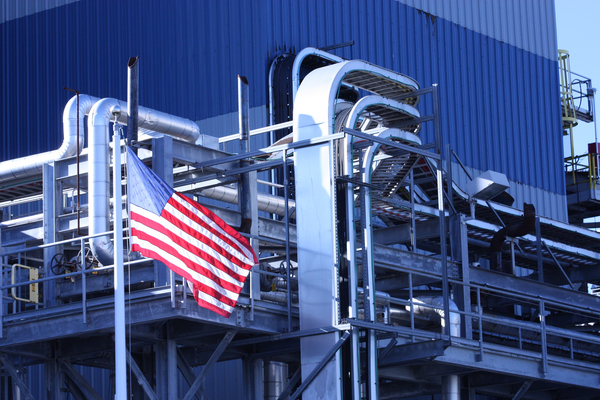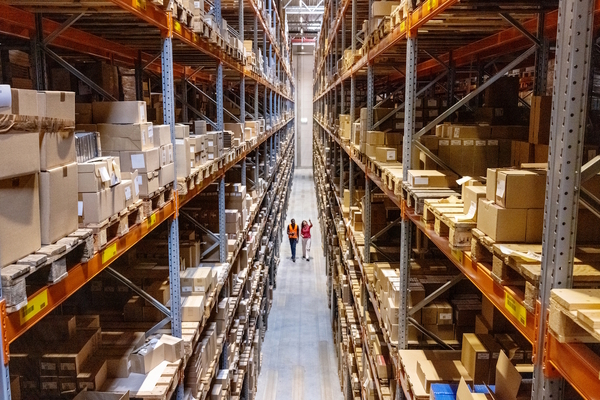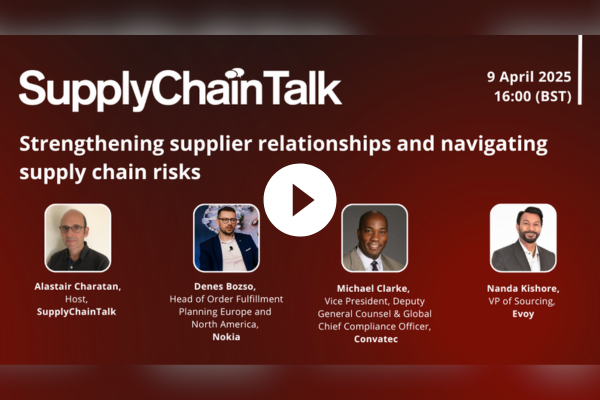Future supply chains are built to bend
Sponsored by Tecsys
Peter Brereton, president and CEO of Tecsys, discusses the need for agility in logistics and the role that technology plays in designing future-ready supply chains.
When the Titanic struck an iceberg in 1912, it was not before lookouts reported potential hazards, the vessel was steered hard to starboard, and the engines thrown into reverse to avoid collision. By the time these measures were taken, of course, the unsinkable ship was already lost.
The captain of the Titanic was missing three key tools, which led to the disaster: insufficient data, limited visibility and a lack of agility. Remarkably, supply chain organisations that are at risk of sinking all these years later are often wrestling with these very obstacles.
“We are in a world of very rapid change. If you do not have a supply chain platform that is designed for – and simply assumes – change in every part of the supply chain and has the ability to handle it with nimbleness, accuracy and efficiency, then you’re out of the game,” says Peter Brereton, president and CEO of Tecsys, a supply chain technology company that equips organisations with software and service solutions designed for transforming markets.
“In the mid-90s, it was both reasonable and practical to install a monolithic ERP that could be configured once and left for years without much need to tweak,” continues Brereton. “But in today’s supply chain, what you did two years ago may very well be irrelevant to what’s happening today.”
“Fast forward a few decades, and many well-established organisations are left with their feet mired in cement, when it’s the people wearing sneakers that can respond quickly enough to the changing demands of the world we’re in,” adds Brereton.
Over the last decade, the role of supply chain has dramatically evolved from transactional cost center to strategic asset. This shift has spurred more logistical complexity, which has made it more difficult to be efficient and effective without the support of technology.
“To unlock the strategic advantages of the supply chain, it is necessary to invest in technology, but not for the sake of technology; investing in technology needs to be done thoughtfully and with a keen purpose of increasing your organisation’s resilience and agility. That’s where the rubber hits the road,” explains Brereton.
Indeed, as Geraint John, vice president analyst with the Gartner Supply Chain practice, reports: “Supply chain executives overwhelmingly recognise the necessity to make their networks more resilient and agile. At the same time, 60 per cent admit that their supply chains have not been designed for resilience, but cost-efficiency. The challenge will be to create an operating model for supply chains that combines the best of both worlds and also delivers supreme customer service.”
The winds of change have gathered speed through this pandemic and the water is choppier than ever with supply disruptions and changing consumer demands. As Brereton explains, it will take purposeful leadership to captain a technology transformation towards resilience and agility because it is a critical business decision that involves almost every departmental stakeholder in an organisation. “It should not be taken lightly, and it should not be back-burnered. More than ever, supply chain supports all of the other important business decisions that need to be made to remain competitive.”
The modern supply chain is not made of steel, but something more flexible. It needs to bend and adapt to the unpredictability of the market, which is more volatile and more complex than ever before. For Brereton and Tecsys, agility is just the waterline for supply chain survival. Navigating the ice fields of modern logistics demands the pursuit for more robust data, visibility, resilience, and innovative use of proven technologies. And that pursuit needs all hands on deck.
To learn more about Tecsys and its portfolio of supply chain solutions, click here.

Business Reporter Team
Most Viewed
Winston House, 3rd Floor, Units 306-309, 2-4 Dollis Park, London, N3 1HF
23-29 Hendon Lane, London, N3 1RT
020 8349 4363
© 2025, Lyonsdown Limited. Business Reporter® is a registered trademark of Lyonsdown Ltd. VAT registration number: 830519543





